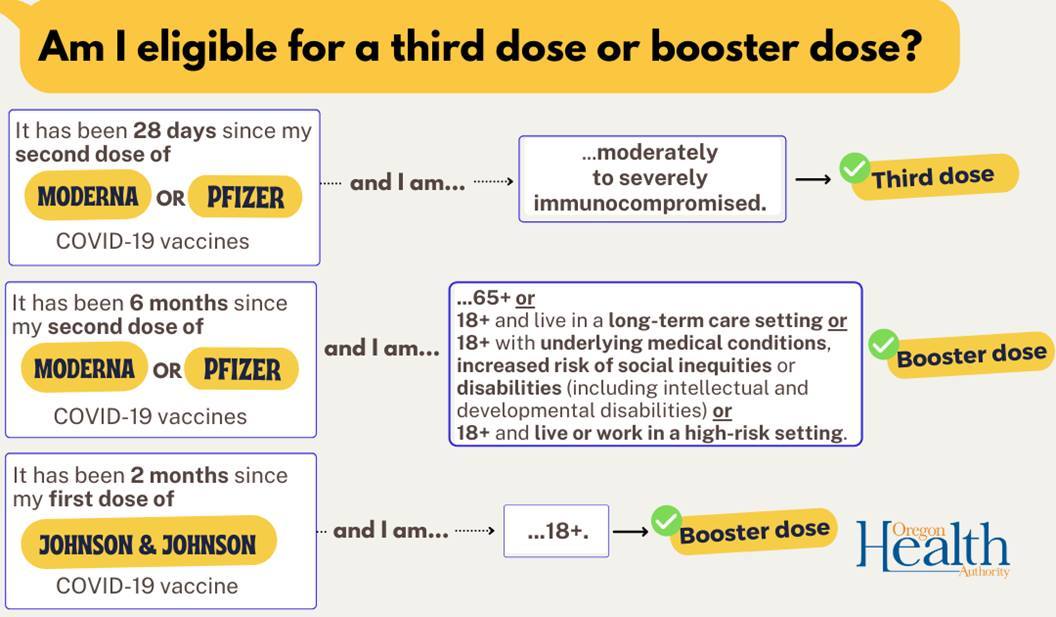|
Friends,
It has been over a year and a half since the pandemic arrived in Oregon, causing immense disruption and hardship for Oregonians. My top priority as Chair of the Housing Committee has been to keep people stably housed: the state has distributed hundreds of millions of dollars in housing assistance and enacted eviction and foreclosure protections to help Oregonians deal with the uncertainty of this pandemic. But now, many tenants and landlords are still dealing with uncertainty. As this Oregonian article illustrates, a backlog of rental applications is putting thousands of Oregon renters at risk of eviction.
Speaker Kotek and a coalition of community organizations across the state have called for a special legislative session to keep people in their homes and address this backlog, and I am working hard to build support for a solution. When the eviction moratorium expired back in June, the legislature created a 60-day “safe harbor” protection for tenants who have applied for rental assistance, to help encourage tenants to apply for assistance and pause any eviction proceeding while their applications were processed. But since the end of the moratorium, we have seen our rental assistance programs struggle with slow processing and an unexpected level of need, made worse by the Delta surge. It’s become clear that that people in our community are at risk of falling through the cracks.
For months, I have been pushing for changes that will get money into tenants’ and landlords’ hands faster, and we are starting to see improvements. But over 12,000 tenant households are at risk of timing out of their safe harbor protections and being evicted, which is why it is so important that the legislature take action. I feel strongly that no tenant should be evicted for nonpayment at a time when there is assistance available and so many people are struggling. I also believe that landlords deserve certainty about when they will receive assistance so that they can pay their own bills. The legislature must provide additional funding to help tenants and landlords, speed up processing of rental assistance, and amend the 60-day safe harbor policy to protect tenants who are waiting on rental assistance. These actions will help Oregonians stay safely and stably housed as we continue to manage the pandemic’s effect on our lives.
Since the peak of the Delta surge, the number of COVID-19 cases and hospitalizations has continued to fall. The number of people currently in the hospital with COVID-19 has dropped from 1,178 in early September to 536 this week – though that number is still nearly as high as it was during the surge in December of 2020.
Vaccination continues to be our best tool to get out of this pandemic, and there has been some great news on that front lately: the FDA and CDC have approved COVID vaccines for kids 5–11, and have approved booster shots to reinforce the protection many of us already have. In addition, the Oregon Health Authority recently announced that 80% of Oregonians 18 and older have already received at least one dose of COVID-19 vaccine, and 68% of all Oregonians, including children, have received at least one shot. There is still more to do to ensure that everyone has protection from this deadly disease – but that high number is a testament to the good work of our local health authorities, health care workers, and community organizations spreading the word about vaccination, and to over 2.8 million Oregonians who have made the choice to protect themselves and their communities.
COVID-19 patients in Oregon hospitals
 This chart shows the total number of COVID-positive patients in hospitals, in ICU beds, and on ventilators since the start of the pandemic.
Vaccines for kids 5–11. The U.S. Food and Drug Administration and the CDC have authorized the emergency use of a pediatric version of the Pfizer COVID-19 vaccine for children ages 5 through 11. I know this news will be a relief to many parents and families whose kids are at school in-person. In their review, the advisory panels to the FDA and CDC noted that the vaccine was found to be 90.7% effective in preventing COVID-19 for kids in this age range, and that no serious side effects were detected in an ongoing study of over 3,000 children who received the vaccine. Even so, it’s understandable that some families may have questions about the effectiveness and safety of the vaccine for young children – the Oregon Health Authority is taking parent questions, and I encourage anyone with concerns to talk to their pediatrician about the best way to keep kids safe.
Lane County Public Health has announced that starting next week, they will be running vaccine clinics specifically for kids, as well as school-based clinics that will be open in the afternoons and evenings after school is out. Scheduling for next week’s clinics will open at lanecounty.org/vaxclinics on Friday morning. You also may be able to make an appointment with your child’s pediatrician or at a local pharmacy. On October 22, the Oregon Health Authority’s public health director signed an order allowing pharmacists to give children 5 and older the pediatric COVID vaccine once it is authorized (without that order, they would only have been allowed to give vaccines to children seven and older). However, OHA recommends checking with your pediatrician or pharmacist that they have the pediatric vaccine available when making an appointment, as it’s a different, lower-dose version of the vaccine given to adults. This Oregonian article is a few days old, but has the answers to some common questions about vaccine supply and logistics for getting kids the shot.
 You can schedule your shot with Lane County Public Health online.
COVID boosters update. The FDA and CDC have also recently increased the number of people eligible for booster shots. Boosters for vaccinations are nothing new – you’ve probably gotten one for tetanus or other common vaccines – and getting one can help bolster your immune system against COVID and new variants. Here’s the run-down on what you need to know about who is eligible:
For people who received the J&J vaccine, everyone 18 and older should get a booster two months after receiving their initial dose, due to that vaccine’s waning effectiveness.
For people who received the Pfizer or Moderna vaccine, the following people are eligible for a booster if it’s been at least six months since their second dose:
- People 65 and older
- People 18 and older with underlying conditions or disabilities
- People 18 and older living in long-term care or a congregate setting
- People 18 and older working in an occupation with a high risk of exposure to COVID-19 (e.g., grocery store, school, farm worker, manufacturing)
In addition, people 18 and older who are moderately or severely immunocompromised are recommended to get a third dose of Pfizer or Moderna 28 days after their second dose. Here is more information from the CDC about vaccines for immunocompromised people – if you’re not sure about getting an additional dose of the vaccine, you should talk to your doctor or health care provider about your health concerns and exposure risk.

Importantly, you are also now allowed to "mix and match" booster shots – meaning you don't have to get the same shot as your initial series. Initial data from a National Institutes of Health study suggests that those who received the J&J shot initially might be better off receiving an mRNA booster like Moderna. Here is an article that discusses some of the evidence and how to choose the best booster for you.
You can schedule booster shots through Lane County Public Health clinics at lanecounty.org/vaxclinics or at your local pharmacy. I found that if you want to mix-and-match, right now, the Lane County site is the easiest to use, though that may change as more pharmacies update their online scheduling tools. My husband and I both got our boosters last week and at a Lane County clinic that was efficient and well-run – after months of hearing disinformation and divisive rhetoric about vaccines, it was very heartening to see so many people lined up to help protect themselves and our community!
One of the big issues facing Oregonians right now is access to mental and behavioral health care. Many people have personal experiences with not being able to access care for themselves or their family. Across the board, the systems we have are under-resourced, under-staffed, and often don’t succeed at setting people on the road to long-term stability.
Oregonians voted to fund some types of treatment when they passed Measure 110 in November 2020 – over the current biennium, that measure will re-direct over $247 million in cannabis tax revenue towards addiction recovery centers and community-based services. And while it didn’t get much coverage in the press, the legislature also made some major strides in addressing behavioral health challenges during the last legislative session. We passed a $474 million funding package to build up and improve Oregon’s mental health system at every point along the spectrum of care. That package includes beds and staffing positions at the Junction City campus of the Oregon State Hospital, where capacity issues have been a serious concern for staff and advocates. At the same time, it also makes several big investments in capacity at the local level, including residential facilities, community behavioral health clinics, and new peer respite centers to serve people experiencing behavioral health crises. Importantly, there will also be new incentives to recruit more people into behavioral health careers, and to build up a workforce that reflects Oregon’s diversity.
As a housing policy person, I especially appreciate that housing is a central part of this package. For instance, it includes $20 million for a behavioral health housing incentive fund to help develop community-based housing and residential treatment facilities. Those kinds of investments are crucial to helping people who need stability and wrap-around support to recover, whether they are currently housed or not.
This interview in the Portland Tribune with two of my colleagues, Rep. Rob Nosse and Sen. Kate Lieber, discusses some of the priorities that went into the package and the challenges our state’s behavioral health system faces – it’s a great read that gets into the weeds about budget decisions and the importance of representation in the legislature.
So many of the challenges that Oregon faces right now do not have easy solutions and can’t be fixed with a single bill or within a single two-year budget cycle. That includes our mental and behavioral health system. The benefit of these investments will take some time to be realized on the ground, but I'm very hopeful about the long-term difference they will make for Oregonians.
Sincerely,
 Julie Fahey
State Representative
Capitol Phone: 503-986-1414
Capitol Address: 900 Court St. NE, H-286, Salem, Oregon 97301
Email: Rep.JulieFahey@oregonlegislature.gov
Website: http://www.oregonlegislature.gov/fahey
|